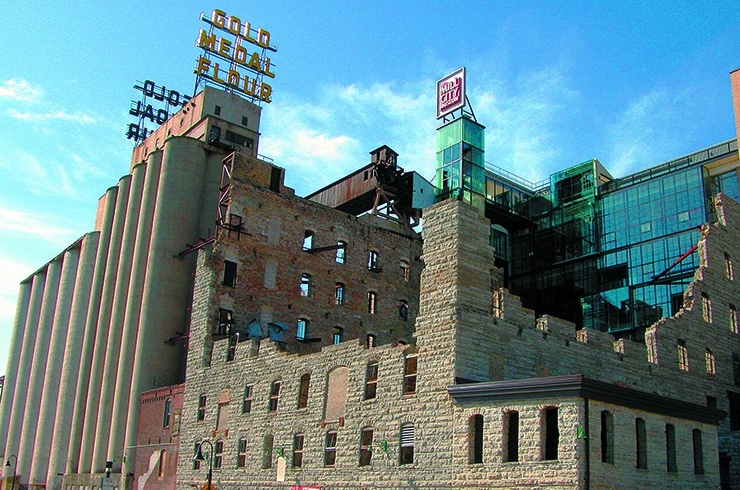From Mill to Museum
The Mill District Today

Photo courtesy of the MN Historical Society
Minnesota farmers began to grow more than just wheat. Corn, oats, alfalfa and soybeans were being grown on land that had been used for wheat. In the 1920’s and 30’s, Canada began to grow more wheat than Minnesota. Because of the increased distance from the fields to the mills, many Minnesota mills began to close.
One by one the mills started to be abandoned. Later on in the 1980’s, people began to see a new use for these buildings and repurposed them into hotels, apartments and museums. Today you can find the Mill City Museum in part of one of the original Pillsbury Mills. The rest of the mill district is now home to a farmers' market, the Guthrie Theatre, shopping, restaurants and the Mill Ruins Park.
What examples can you find in your own community of buildings serving new purposes?


Photo courtesy of Mill City Farmers’ Market
Agriculture has played an important role in Minnesota’s history and continues to impact us today. Minnesota is currently the 5th top agricultural producing state in the country and a leading producer of corn and soybeans. Minnesota agriculture is the industry that grows, harvests and brings us food, fiber, trees, and more!
